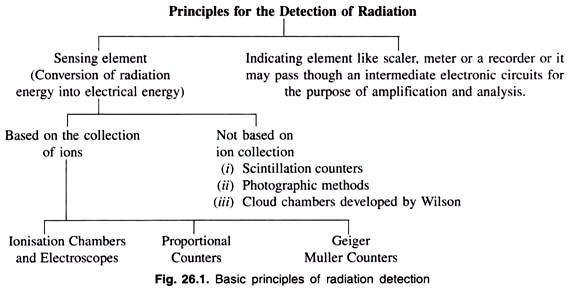ADVERTISEMENTS:
Nitrogen is added to the soil and lost from it when it undergoes a number of transformations. A small portion of nitrogen gas is directly assimilated by symbiotic and non- symbiotic nitrogen fixing bacteria and also by blue-green algae, to synthesize their cell protoplasm. Proteins present in organic matter as well as in the bodies of soil microorganisms are decomposed to amino acids which are further oxidized to nitrates.
Considerable amounts of nitrate may be leached down during the rainy season. A portion of nitrates may be further reduced to nitrous oxide and nitrogen gas by the denitrifying bacteria and lost to the atmosphere (Fig. 8.2).
Plant assimilate nitrates, grow and are eaten up by animals. Plant material and animal dung is decomposed to form the humus. The above sequence of biochemical reactions, by which forms of nitrogen change under natural conditions, is called the Nitrogen Cycle as shown in Fig. 8.2.
Transformation of Nitrogen in Soils:
A large number of heterotrophic micro-organisms bring about complex transformations of nitrogen as shown below:
Proteins → Amino Acids → Ammonium Compounds → Nitrites → Nitrates
Aminization:
Proteins are decomposed by the proteinase enzyme to amino acids.
Ammonification:
Amino acids are converted to ammonium compounds by a process called ammonification
Heterotrophic micro-organisms produce enzymes that convert amino acids to ammonia in well-drained soil (as shown in the above equation) in the presence of plenty of basic cations. Some of the ammonium ions may be assimilated by the same micro-organisms.
ADVERTISEMENTS:
Some ammonium ions may be taken up by roots of higher plants. Some ammonium ion may be fixed by clay minerals like vermiculite, Montmorillonite, etc., and the rest converted to nitrate by a process called nitrification.
Nitrification:
Nitrification is a process of oxidation of ammonium compounds to Nitrate by enzymes produced by autotrophic bacteria as illustrated in the under mentioned
Nitrosomonas bacteria convert ammonium to nitrites, which are further converted to nitrates by Nitrobacter. Usually nitrites are rapidly oxidized to nitrates. Thus nitrites do not accumulate in soil.
ADVERTISEMENTS:
Factors Affecting Nitrification:
The nitrifying bacteria are extremely sensitive to their environment.
Nitrification is affected by the following factors:
ADVERTISEMENTS:
(i) Aeration:
As nitrification is an oxidative process it is increased by tillage operations like ploughing and cultivations, which increase the supply of oxygen of soils, provided other conditions, are favourable.
(ii) Temperature:
30 to 32°C is most favourable for nitrification. It takes place very slowly at or less and at 40°C or more.
(iii) Moisture:
Nitrates usually appear most readily at one half to two-thirds of the maximum available water holding Capacity of Soils.
(iv) Soil Reaction:
The optimum pH for nitrification appears to be between 6.5 and 7.8. Bacterial strains which occur in acidic soil continue this process best at a pH of 6.5 while those that occur in alkaline soils continue this process best at pH 7.8.
(v) Season:
The interaction of moisture, temperature, cropping and nutrients is the seasonal effect.
After reading this article you will learn about the symbiotic and non-symbiotic nitrogen fixation in soil.
Symbiotic Nitrogen Fixation:
Symbiosis means the physiological partnership between two living organisms. Bacteria belonging to the genus Rhizobium live in the nodules that occur on the roots of leguminous plants (Legumes) in most cases and assimilate nitrogen gas from the atmosphere to synthesize amino acids which bacteria supply to the host plant, which supplies carbohydrates to the Rhizobium bacteria.
The carbohydrates are oxidized to carbon dioxides and water and energy in liberated which is utilized by the Rhizobium bacteria. Bacteria which belong to the genus Rhizobium have been classified into several cross-inoculation groups on the basis of their capacity to infect the roots of a restricted number of leguminous plants and form nodules in addition to the roots of the legume from which the bacterial strain were first obtained.
Seven cross-inoculation groups recognized so far are as follows:
Rhizobium Bacteria which infect roots of cowpea and sun-hemp and form nodules on them have been observed at I.A.R.I., New Delhi to fix about 90 kg of nitrogen per hectare per year. It has also been observed at I. A.R.I, New Delhi, that Rhizobium trifolii, that forms nodules on the roots of barseem (Trifolium alexandrium), fixed about 120kgs of nitrogen per hectare per year.
The weight and numbers of nodules decrease when excessive amounts of ammonium compounds or nitrates accumulate in the soil.
A high Carbohydrate:
Nitrogen ratio within the host plant increases the amount of nitrogen fixed by the bacteria, whereas an even higher Carbohydrate: Nitrogen ratio resulting from very high photosynthesis decreases the amount of nitrogen fixed.
Rhizobium bacteria do not infect the roots of leguminous plants below. pH 5.0 Molybdenum and calcium are essential for nitrogen fixation.
Non-Symbiotic Nitrogen Fixation:
Certain free living organisms like Azotobacter, Beijerinekia, Clostridium, blue-green algae etc. can directly assimilate nitrogen gas from the atmosphere, to synthesize their cell protoplasm. When these organisms die, their bodies decompose and nitrogen becomes available to higher plants.
The addition of readily decomposable organic matter increases nitrogen fixation for which an adequate supply of molybdenum and calcium is also essential. Non-symbiotic nitrogen fixation by Azotobactor stops below pH 5.0.
Mechanism of Symbiotic and Non-Symbiotic Nitrogen Fixation:
The exact mechanism of symbiotic and non-symbiotic nitrogen fixation is not clear. The enzyme nitrogenase activates the nitrogen gas, which combines with the hydrogen to form ammonia that reacts with the carboxylic acids to form into amino acids, which combine with each other to form proteins as shown in the following equation:
Denitrification:
The sequence of step that result in the gaseous loss of nitrogen is called denitrification.
Certain microorganisms like Pseudomonas, Clastridium, etc. use the combined oxygen in nitrates under anaerobic conditions to oxidise organic compounds when nitrates are reduced to nitrates, oxides of nitrogen and nitrogen gas as shown in the following equation:





